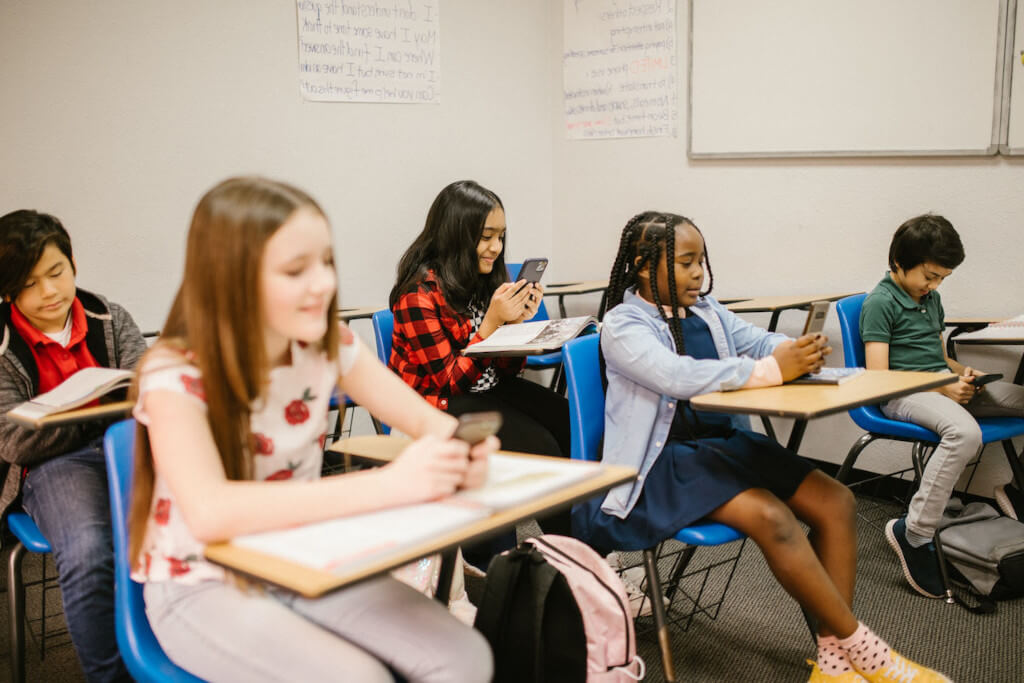The lines that used to divide the real and virtual worlds have become increasingly blurry as a result of technological advancements. This has resulted in significant changes in day-to-day life and has altered how kids and teenagers live, interact socially, navigate their environments, and acquire knowledge.
This has never been so obvious as it was at the beginning of the COVID pandemic outbreak and the resulting dramatic increase in internet and technology use. Never before was this the case. According to some global estimates, approximately one in every three people who use the internet is a child.
Children can gain access to information, social connections, schooling, online support networks, and even professional assistance through the use of digital technology. But children who participate in the digital environment are putting themselves in danger by exposing themselves to a variety of risks. These include inappropriate material (whether it be violent or sexual), unwelcome contact with strangers, as well as cyberbullying, and victimization.
The South African Child Gauge is a yearly publication that seeks to report on and track the condition of children in South Africa, specifically the realization of their rights. Its name comes from the fact that its purpose is to gauge the state of children in South Africa. The mental state of children and adolescents is the topic that will be examined in depth in this year’s report.
In recent months, there has been an increase in public discussion and concern regarding the possibility that digitalization may contribute to mental issues such as depression, self-harm, and suicidal behavior among children and teenagers. The purpose of our article in the Child Gauge report is to investigate the effect that digital worlds have on the mental health of children. By doing so, we hope to contribute to the overall comprehension of the challenges and outcomes associated with growing up in an online environment. In addition to this, one of our goals is to offer some suggestions for both policy and practice.

In recent times, the significance of a well-balanced diet has gained prominence. Scientific nutrition research…

The effects of chemotherapy on hair loss can be unsettling, but understanding the underlying processes…

While waking up early might seem like a daunting task, it holds the promise of…
How Children in South Africa Make Use of Various Forms of Electronic Technology
Approximately 38 million people are using the internet in South Africa (1.5 million households). The majority of children use their parents’ smartphones to access the internet at home, connecting via mobile data. The amount of time spent online by children increases as they get older. Because cell phone plans in South Africa offer free or cheaper information through social media platforms, social media use has become much more widespread than any other form of online activity. This has a direct impact on the subject matter that children interact with while they are online.
The Connection Between the Use of Digital Technology and One’s Mental Health is a Tricky One
To have a complete understanding of how the digital world affects the mental health of children, it is necessary to take into account not just the possible negative effects, but also the positive aspects that can be gained from participating in online activities.
There are some instances in which being exposed to potential dangers online does not result in negative consequences. Involvement in a public group on Facebook, for instance, could put a child in danger of being sexually groomed by an adult because adults occasionally pose as children. However, if a child is capable of preventing, anticipating, and managing the attempted harassment, this will not necessarily result in the child being harmed.
Teenagers who are suffering from mental health issues in their offline lives may be more likely than other teenagers to pursue negative online content. This might make their current mental health problems even worse, which might lead them to hurt themselves. However, social media platforms also have the potential to serve as a resource for information on mental health as well as support and assistance from trained professionals.
Therefore, it is beneficial to think about how to cultivate the (digital) strength of children such that they recognize what threats they are likely to face at different ages and know when they’re at risk. It is essential that they are aware of what to do and the steps to take to recover after negative experiences.
Maintaining the Children’s Online Safety
A holistic strategy is required in order to maximize the positive effects of technology on children’s mental health and well-being while simultaneously minimizing their vulnerability to dangers posed by the internet. This includes acknowledging the part that parents and carers, teachers, regulatory agencies, technology firms, and children themselves have to play in boosting the mental health of children in all aspects of their engagement with the internet.
It’s a common misconception among parents that restricting their children’s access to the internet and social media will keep them safe, but this is not the case. The prohibition of children’s use of the internet may lead to their being socially isolated or inhibit them from gaining access to services or information related to mental health.
Parental controls and surveillance systems certainly have their uses, but the internal safeguards that children develop, such as empathy, resilience, and principles, are far more effective and will serve them throughout their lives, regardless of whether they spend their time online or offline.
It is essential for Parents to Engage in a Candid Conversation With Their Children

Children will feel more comfortable opening up to you about their use of social media if you build rapport with them first. Good citizenship, which includes social education, community engagement, responsibility, and recognizing the rights and viewpoints of others, is something that parents should model for their children.
The manufacturing sector of the technology sector has a significant role to play in ensuring that products are developed with the welfare of children in mind. Both the young users’ rights to freedom of speech and their right to privacy of their data need to be maintained and sheltered. When a violation of children’s rights does take place, there must be procedures in place to resolve the issue.
The goal of the policies, regulations, and rules that are implemented in schools should be to strike a balance between the need to protect children and the children’s privacy rights and the ability to use technology in a manner that is suitable for their ages. These policies should encourage the constructive use of digitalization while simultaneously making efforts to limit content access that could be harmful.
Education for teachers is also required so that they can recognize signs of trauma or emotional turmoil in children who have experienced harm online and refer those children to psychological and social support services when necessary.
In conclusion, and most pertinently, children need to have access to information as well as educational opportunities and training in order to encourage the growth of their skills in digital literacy. They have to have the self-assurance to ask for assistance whenever it is required of them and the knowledge that they will receive it.




